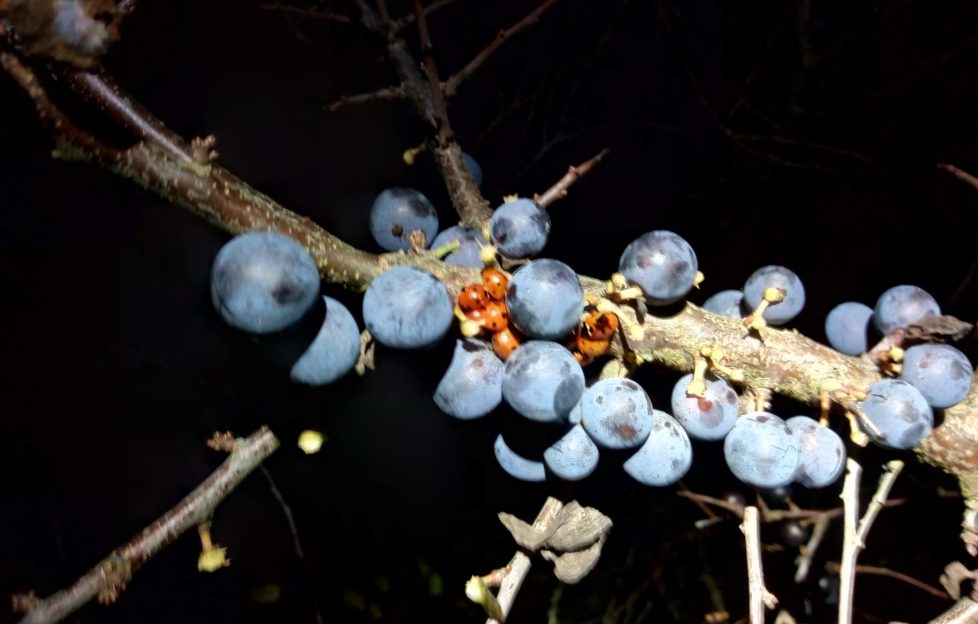
Where do ladybirds sleep?
After what seems to have been a fairly good summer for the little red beetles, I’ve started to come across ladybirds all over the place, finding a bit of warmth and shelter wherever they could as the autumn gets wet and windy.
While I was nipping in and out of town on my bike last Saturday, I stopped at a bush that had great big blueberry-style fruits on it. I’d no idea these were sloes until I looked them up on t’internet, but I vowed to come back later with a tub and grab some for making jam.
We were heading out for a meal in the evening, so we stopped on the way and I jumped out the car in the dark. Armed with my headtorch and Tupperware, I started gathering the sloes – until I accidentally uncovered a little gathering of ladybirds.
Feeling a bit guilty for taking away their shelter, I left the rest of that clump of sloes alone and hoped that once I’d disappeared they’d all up sticks and shuffle under one of the neighbouring fruits.
Everyone Loves A Ladybird
It’s funny how deeply entrenched attitudes to animals and bugs are – whilst we might be (at best) pretty indifferent to spiders and daddy longlegs, everybody welcomes a ladybird and would happily let one crawl across their arm or leg.
I was curious to know why we’re so fond of ladybirds, and I found some fascinating facts about them. Did you know:
- A ladybird can eat up to 5,000 aphids in its life! No wonder they’re loved by gardeners and farmers.
- Ladybirds pretend they are dead to deter attackers.
- Ladybirds live in almost every part of the world except Antarctica and above the Arctic circle.
- Ladybirds have a top speed of 15mph in flight.
Here’s hoping they managed to get a good night’s sleep, despite my rude interruption.




